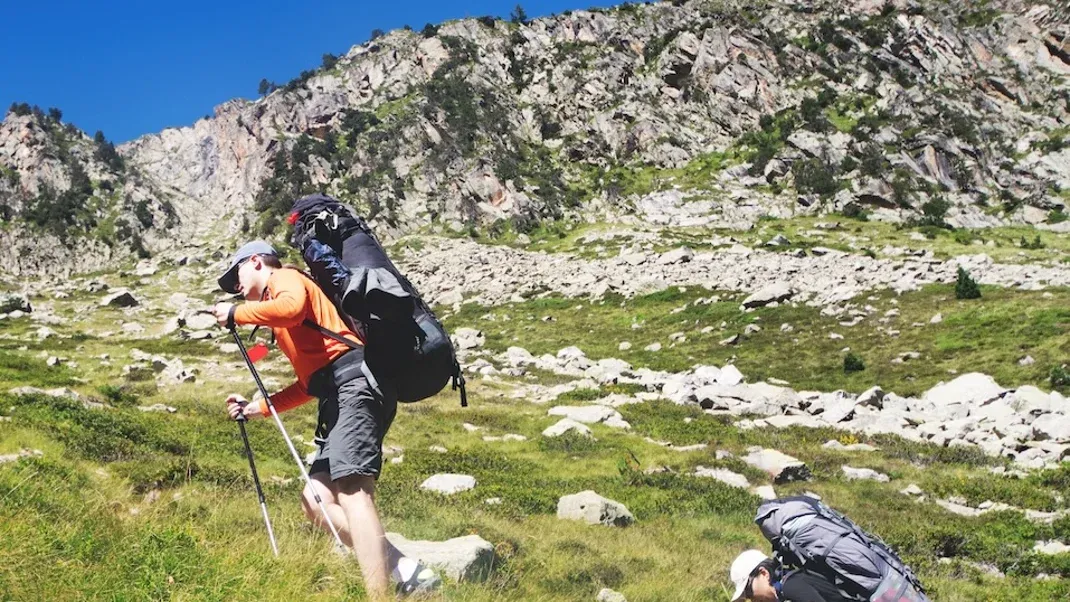Think You’re a Strong Hiker? Test Your Trail Strength with These 4 Exercises
"Think You’re a Strong Hiker? Test Your Trail Strength with These 4 Exercises" is an article that highlights four specific exercises to help hikers gauge and improve their trail strength. The exercises are designed to target the muscles and movements that are essential for hiking, including leg strength, balance, and endurance. By following the suggestions in the article, hikers can strengthen their bodies in preparation for the physical demands of hiking, ultimately improving their performance and enjoyment on the trails. Whether you are a seasoned hiker or just getting started, these exercises can help you build the strength and stamina needed to conquer any trail.

Are you an avid hiker who loves hitting the trails and exploring the great outdoors? Do you pride yourself on your strength and endurance when tackling challenging hikes? If so, you may think you’re a strong hiker – but how do you really know?
Hiking is a fantastic way to stay fit and healthy while enjoying the beauty of nature. Whether you’re a casual hiker or a seasoned trekker, it’s important to ensure that your body is strong and ready for the demands of the trail. To truly test your trail strength, consider incorporating these four exercises into your fitness routine.
First, let’s start with the basics. Hiking requires a combination of strength, endurance, balance, and agility. To assess your trail strength, you need to focus on exercises that target these key areas.
1. Strength and Endurance: Squats and Lunges
One of the most important aspects of hiking is the ability to power through uphill climbs and navigate rough terrain. To build strength and endurance in your lower body, incorporate squats and lunges into your workout routine.
Squats are a fantastic exercise for building strength in your quadriceps, hamstrings, and glutes – all of which are essential for powering through steep inclines on the trail. Make sure to focus on proper form, keeping your back straight and your knees behind your toes as you lower yourself into a squat.
Lunges are another great exercise for developing lower body strength and stability. They target your quads, hamstrings, and glutes while also improving your balance and coordination – important skills for navigating uneven terrain on the trail.
Incorporating these exercises into your routine will help you build the strength and endurance necessary to tackle challenging hikes with confidence.
2. Balance and Agility: Single-Leg Deadlifts
Maintaining balance and agility is crucial for hikers, especially when navigating narrow paths, rocky terrain, or uneven surfaces. Single-leg deadlifts are a fantastic exercise for improving balance and stability while also targeting the muscles in your lower back, glutes, and hamstrings.
To perform a single-leg deadlift, stand on one leg with a slight bend in the knee. Keeping your back flat and your core engaged, hinge at the hips and lower your torso towards the ground while simultaneously lifting your non-supporting leg behind you. Focus on maintaining a straight line from your head to your heel as you lower yourself, then return to the starting position by engaging your glutes and hamstrings.
By incorporating single-leg deadlifts into your workout routine, you can improve your balance and agility, making it easier to navigate tricky terrain and maintain stability on the trail.
3. Core Strength: Planks and Russian Twists
A strong core is essential for hikers, as it helps with stability, balance, and overall body control. Planks and Russian twists are two excellent exercises for building core strength and stability.
Planks are a simple yet effective exercise for targeting the muscles in your core, including your abdominals, obliques, and lower back. To perform a plank, start in a push-up position with your hands directly beneath your shoulders. Engage your core and hold the position for as long as you can, focusing on maintaining a straight line from your head to your heels.
Russian twists are a great exercise for targeting your obliques, which are important for stability and rotational movement. Sit on the ground with your knees bent and your feet lifted off the ground. Hold a weight or medicine ball in front of you and twist your torso from side to side, engaging your obliques with each rotation.
Incorporating planks and Russian twists into your routine will help you develop a strong and stable core, making it easier to maintain balance and control while hiking.
4. Cardiovascular Endurance: Interval Training
In addition to strength and stability, hiking also requires cardiovascular endurance to power through long distances and steep inclines. Interval training is a fantastic way to improve your cardiovascular fitness and build the endurance necessary for challenging hikes.
Interval training involves alternating between periods of high-intensity exercise and periods of rest or lower intensity. This can be achieved through activities such as running, cycling, or using a stair climber. By pushing your body to work at a higher intensity for short bursts, you can improve your cardiovascular fitness and increase your endurance.
Incorporating interval training into your fitness routine will help you build the cardiovascular endurance necessary to tackle long hikes and challenging terrain with ease.
In conclusion, if you think you’re a strong hiker, it’s important to test your trail strength with these four exercises. By focusing on strength, balance, core stability, and cardiovascular endurance, you can ensure that your body is prepared for the demands of the trail. Incorporating these exercises into your fitness routine will help you build the strength and endurance necessary to tackle challenging hikes with confidence, allowing you to fully enjoy the beauty of the great outdoors. So, lace up your hiking boots, hit the trails, and push yourself to new heights with these trail-strength exercises.






